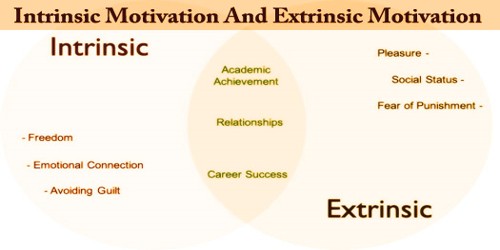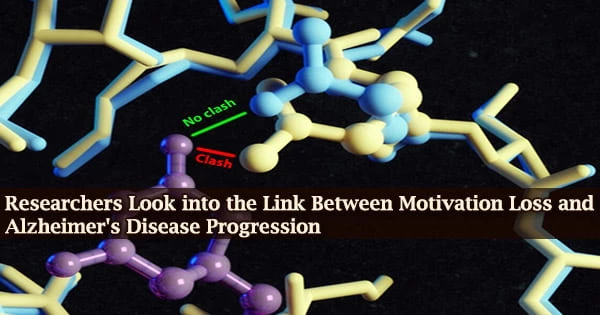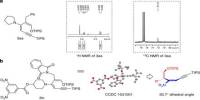Motivation concerns energy, direction, persistence, and equifinality all aspects of activation and intention. Motivation has been a central and perennial issue in the field of psychology, for it is at the core of biological, cognitive, and social regulation. Perhaps more important, in the real world, motivation is highly valued because of its consequences: Motivation produces. It is therefore of preeminent concern to those in roles such as manager, teacher, religious leader, coach, health care provider, and parent that involve mobilizing others to act.
Self-determination theory (SDT) claims to give a different approach to motivation, considering what motivates a person at any given time as opposed to seeing motivation as a unitary concept. SDT makes distinctions between different types of motivation and the consequences of them.
Although motivation is often treated as a singular construct, even superficial reflection suggests that people are moved to act by very different types of factors, with highly varied experiences and consequences. People can be motivated because they value activity or because there is strong external coercion. They can be urged into action by an abiding interest or by a bribe. They can behave from a sense of personal commitment to excel or from fear of being surveilled. These contrasts between cases of having internal motivation versus being externally pressured are surely familiar to everyone. The issue of whether people stand behind a behavior out of their interests and values, or do it for reasons external to the self, is a matter of significance in every culture and represents a basic dimension by which people make sense of their own and others’ behavior.
Intrinsic Motivation –
Intrinsic motivation is the natural, inherent drive to seek out challenges and new possibilities that SDT associates with cognitive and social development.
Cognitive evaluation theory (CET) is a sub-theory of SDT that specifies factors explaining intrinsic motivation and variability with it and looks at how social and environmental factors help or hinder intrinsic motivations. CET focuses on the needs of competence and autonomy. CET is offered as an explanation of the phenomenon known as motivational “crowding out.”
Claiming social context events like feedback on work or rewards leads to feelings of competence and so enhances intrinsic motivations. Deci found positive feedback enhanced intrinsic motivations and negative feedback diminished it. Vallerand and Reid went further and found that these effects were being mediated by perceived control.
Autonomy, however, must accompany competence for people to see their behaviors as self-determined by intrinsic motivation. For this to happen there must be immediate contextual support for both needs or inner resources based on prior development support for both needs.
CET and intrinsic motivation is also linked to relatedness through the hypothesis that intrinsic motivation flourishes if linked with a sense of security and relatedness. Grolnick and Ryan found lower intrinsic motivation in children who believed their teachers to be uncaring or cold and so not fulfilling their relatedness needs.
Extrinsic Motivation –
The term extrinsic motivation refers to the performance of an activity in order to attain some separable outcome and, thus, contrasts with intrinsic motivation, which refers to doing an activity for the inherent satisfaction of the activity itself. Unlike some perspectives that view extrinsically motivated behavior as invariantly non-autonomous, SDT proposes that extrinsic motivation can vary greatly in its relative autonomy.
For example, students who do their homework because they personally grasp its value for their chosen career are extrinsically motivated, as are those who do the work only because they are adhering to their parents’ control. Both examples involve instrumentalities rather than enjoyment of the work itself, yet the former case of extrinsic motivation entails personal endorsement and a feeling of choice, whereas the latter involves compliance with external regulation. Both represent intentional behavior, but they vary in their relative autonomy. The former, of course, is the type of extrinsic motivation that is sought by astute socializing agents regardless of o1: the applied domain.
Deci and Ryan developed organismic integration theory (OIT), as a sub-theory of SDT, to explain the different ways extrinsically motivated behavior is regulated. OIT details the different forms of extrinsic motivation and the contexts in which they come about. It is the context of such motivation that concerns the SDT theory as these contexts affect whether the motivations are internalized and so integrated into the sense of self.
OIT describes four different types of extrinsic motivations that often vary in terms of their relative autonomy:
- Externally regulated behavior: Is the least autonomous, it is performed because of external demand or possible reward. Such actions can be seen to have an externally perceived locus of control.
- Introjected regulation of behavior: describes taking on regulations to behavior but not fully accepting said regulations as your own. Deci and Ryan claim such behavior normally represents regulation by contingent self-esteem, citing ego involvement as a classic form of introjections. This is the kind of behavior where people feel motivated to demonstrate an ability to maintain self-worth. While this is internally driven, introjected behavior has an external perceived locus of causality or not coming from one’s self. Since the causality of the behavior is perceived as external, the behavior is considered non-self-determined.
- Regulation through identification: a more autonomously driven form of extrinsic motivation. It involves consciously valuing a goal or regulation so that said action is accepted as personally important.
- Integrated Regulation: Is the most autonomous kind of extrinsic motivation. Occurring when regulations are fully assimilated with self so they are included in a person’s self-evaluations and beliefs on personal needs. Because of this, integrated motivations share qualities with intrinsic motivation but are still classified as extrinsic because the goals that are trying to be achieved are for reasons extrinsic to the self, rather than the inherent enjoyment or interest in the task.
Extrinsically motivated behaviors can be integrated into the self. OIT proposes internalization is more likely to occur when there is a sense of relatedness. Ryan, Stiller, and Lynch found that children internalize the school’s extrinsic regulations when they feel secure and cared for by parents and teachers. The internalization of extrinsic motivation is also linked to competence. OIT suggests that feelings of competence in activities should facilitate internalization of said actions.
Demonstrations of positive outcomes being associated with more internalized motivation have also emerged in other diverse domains, including religion, physical exercise, political activity, environmental activism, and intimate relationships, among others. The advantages of greater internalization appear, then, to be manifold, including more behavioral effectiveness, greater volitional persistence, enhanced subjective well-being, and better assimilation of the individual within his or her social group.
Information Sources:
















